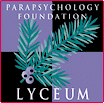 |
 |
| Click here for a French version of this blog
PF Lyceum Blog #4, November 3rd, 2005 Carlos S. Alvarado, Ph.D. Every field has a long tradition that is recorded in its literature. To have a historical perspective in parapsychology, and in other fields, means to be acquainted, or at least have some passing familiarity, with past publications and developments. To acquire this perspective, the first step is to study the literature that chronicles and interprets past developments of the field (click here). This short essay aims at identifying general trends and issues in the past literature of parapsychology but does not cover descriptions of phenomena, research techniques, findings of particular investigations, or theories. To obtain this information the reader is encouraged to follow the resources and brief discussions provided in the links. There are many aspects of the literature of which the beginning student should be aware. For one, the topics at hand are not limited to the study of past investigations of psychic phenomena. Other issues include: theoretical constructs, methodology, the identity and training of the researchers, and the historical outlook of phenomena (e.g., ideas of telepathy, the practice of mediumship). You should be aware that there are at least two literatures pertaining to the history of the field. On one hand, there are professional historians who are not concerned with the reality of the phenomena. That is, they do not care if veridical information was communicated in an ESP experience reported by a famous person of the past, or if a table really levitated in old accounts of seances. Historians are concerned with tracing the intellectual development of the discipline in terms of such issues as the researchers’ training, competition between rival paradigms, or the role of psychic phenomena in relation to other ideas. On the other hand, there are people who are concerned with the reality of the phenomena and who write their papers or books with this in mind. These people tend to be avocational historians or parapsychologists who are interested in history. Some of these individuals also conduct research on parapsychological phenomena. Both approaches are useful to the student of parapsychology (for examples click here). Traditionally, the history of parapsychology has been seen in terms of periods, stages, or movements. There are many ways of organizing the history of the field. In general, we may refer to an initial (and poorly and arbitrarily defined) period that extends from antiquity to the 18th century. During this time there were few systematic studies but many observations of unexplained phenomena such as apparitions, divination of future events, dowsing, healing, and poltergeists, among many others. The early literature includes discussions of some of these phenomena in the context of religious beliefs, demonology and witchcraft (for examples click here and here). Several general surveys have covered this period, among them Brian Inglis in his Natural and Supernatural: A History of the Paranormal from Earliest Times to 1914 (rev. ed., Dorset: Prism, 1992, chapters 1-15). 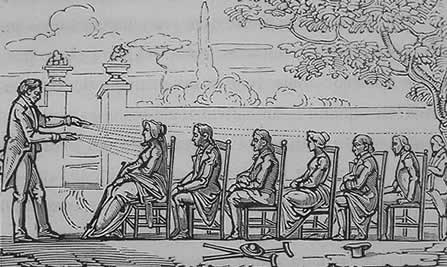 During the eighteenth century Mesmerism developed thanks to the initial efforts of Franz Anton Mesmer (1734-1815; for links to on-line articles click here and for a bibliography on the history of mesmerism click here). The movement was based on the concept of a universal force channeled through the body called animal magnetism. This force, as controlled by a mesmerist, was thought to be the vehicle by which someone could be put in trance (sonambulism), healed, and, in cases of clairvoyance at a distance, receive information, make medical diagnoses, and feel sensations felt simultaneously by the mesmerizer. During the eighteenth century Mesmerism developed thanks to the initial efforts of Franz Anton Mesmer (1734-1815; for links to on-line articles click here and for a bibliography on the history of mesmerism click here). The movement was based on the concept of a universal force channeled through the body called animal magnetism. This force, as controlled by a mesmerist, was thought to be the vehicle by which someone could be put in trance (sonambulism), healed, and, in cases of clairvoyance at a distance, receive information, make medical diagnoses, and feel sensations felt simultaneously by the mesmerizer.
The mesmeric movement, in which many physicians were involved, provided an early context for the systematic observation and recording of psychic phenomena. To some extent this happened because the validation of psychic phenomena was seen as evidence for the reality of animal magnetism and its effects. Among the pioneering magnetists were Frenchmen Armand-Marie-Jacques de Chastenet, Marquis de Puységur (1751-1825), A.A. Tardy de Montravel, Louis Joseph Jules Charpignon (1815-1886), and Baron Jean du Potet de Sennevoy (1796-1881). Mesmerism and the spiritualist movement were connected in many ways. For example, versions of the concept of animal magnetism were used by many individuals to account for spiritualistic phenomena (click here). In the mesmeric movement it was claimed that magnetic sonambules communicated with the dead, as can be seen in the work of Alphonse Cahagnet (1809-1885). (For more information click here). 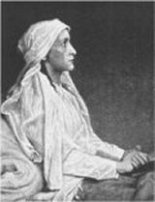 In addition, there were examples of visionary, sonambulistic and clairvoyant phenomena in individuals such as Emanuel Swedenborg 1688-1772) and Friederike Hauffe (1801-1829), whose picture appears to the left of this paragraph. Friederike Hauffe was studied by physician and poet Justinus Kerner (1786-1862), and discussed by Kerner in his work, Die Seherin von Prevorst (1829) (click here for an English translation). Such cases, as well as many other related phenomena from previous times, prepared the ground for the appearance of the modern medium. In addition, there were examples of visionary, sonambulistic and clairvoyant phenomena in individuals such as Emanuel Swedenborg 1688-1772) and Friederike Hauffe (1801-1829), whose picture appears to the left of this paragraph. Friederike Hauffe was studied by physician and poet Justinus Kerner (1786-1862), and discussed by Kerner in his work, Die Seherin von Prevorst (1829) (click here for an English translation). Such cases, as well as many other related phenomena from previous times, prepared the ground for the appearance of the modern medium.
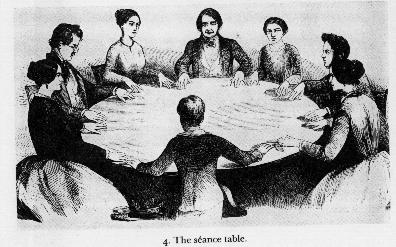 Spiritualism developed in the United States at a time during the mid-nineteenth century when many new ideas and religious movements were prevalent. Like other religions, Spiritualism taught that men and women were spiritual beings who survived death (for links click here and for a bibliography click here). More characteristic of the movement was the belief that one could be in contact with the departed through phenomena such as apparitions and poltergeists, and, particularly, through mediums.These were individuals believed to be able to put the living in contact with the dead (click here). Spiritualism developed in the United States at a time during the mid-nineteenth century when many new ideas and religious movements were prevalent. Like other religions, Spiritualism taught that men and women were spiritual beings who survived death (for links click here and for a bibliography click here). More characteristic of the movement was the belief that one could be in contact with the departed through phenomena such as apparitions and poltergeists, and, particularly, through mediums.These were individuals believed to be able to put the living in contact with the dead (click here).
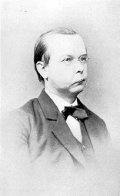 Similar to mesmerism, Spiritualism, attracted the attention of many — scientists, writers, and the general public — to the point that examinations of its phenomena were done by such individuals as judge John W. Edmonds (1816-1874), politician Agenor de Gasparin (1810-1871), chemist Robert Hare (1781–1858), astronomer and physicist (who is pictured at the right) Johann K. F. Zollner (1834-1882), naturalist, Alfred Russel Wallace (1823-1913) and physicist William Crookes (1832-1919). (See the books of Zollner by clicking here and the books of Crookes by clicking here). Similar to mesmerism, Spiritualism, attracted the attention of many — scientists, writers, and the general public — to the point that examinations of its phenomena were done by such individuals as judge John W. Edmonds (1816-1874), politician Agenor de Gasparin (1810-1871), chemist Robert Hare (1781–1858), astronomer and physicist (who is pictured at the right) Johann K. F. Zollner (1834-1882), naturalist, Alfred Russel Wallace (1823-1913) and physicist William Crookes (1832-1919). (See the books of Zollner by clicking here and the books of Crookes by clicking here).
Like Mesmerism, the investigation of mental and physical manifestations such as messages received through automatic writing and materializations were vital for the support of spiritualist philosophy, which in turn encouraged the investigation of mediumship and other phenomena. Eventually this interest led to the development of an important institution in the field, the London-based Society for Psychical Research (SPR), an organization founded in 1882 that is still active today (For links about the SPR, click here and for a bibliography about the SPR, click here). The nineteenth-century studies conducted by SPR researchers centered on the phenomena of mediums, on apparitions of the living and of the dead, and on thought-transference, later called telepathy. The concept of telepathy, of key importance to SPR researchers, was an extension and further elaboration of previous ideas from the mesmeric movement. SPR members, such as Edmund Gurney (1847-1888), explored this phenomenon through experiments and through the study of spontaneous experiences. The latter, consisted of visual, auditory and somatic experiences, as well as imageless impressions and impulses corresponding to a veridical event taking place at a distance. These events, usually some form of crisis taking place in the life of a family member of the experiencer (accidents, death), were recorded and carefully investigated in Gurney, Myers, and Frank Podmore’s Phantasm of the Living (1886), the first major work of the SPR researchers. The explanation for these events was telepathy, that is, the experiencer received a message or an idea from the person having the crisis that was manifested as a hallucinatory (but veridical) percept (click here). 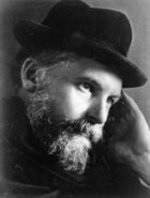 Some of the SPR researchers also explored dissociation and the subconscious mind both as topics by themselves, as in the workings of motor automatisms, the stages of hypnosis, and in relation to psychic phenomena. The work of classical scholar Frederic W. H. Myers (1843-1901), pictured at the left, was particularly important in this regard because he developed a comprehensive model of the subliminal mind that included the manifestations of creativity, hypnosis, dreaming and such phenomena as telepathy and mediumship. (For links to on-line materials about Myers, click here and for a bibliography on Myers click here). Some of the SPR researchers also explored dissociation and the subconscious mind both as topics by themselves, as in the workings of motor automatisms, the stages of hypnosis, and in relation to psychic phenomena. The work of classical scholar Frederic W. H. Myers (1843-1901), pictured at the left, was particularly important in this regard because he developed a comprehensive model of the subliminal mind that included the manifestations of creativity, hypnosis, dreaming and such phenomena as telepathy and mediumship. (For links to on-line materials about Myers, click here and for a bibliography on Myers click here).
The construction of psychical research also involved the performances of mediums, some of which were fraudulent. (See also the section on mediumistic fraud and skepticism in the Links on Spiritualism and Spiritism.) The interaction between researchers and mediums did much for the development of methodology and theory. (For biographies of researchers and mediums click here). This work interacted with ideas coming from different fields, which in turn, informed many speculations about the nature of psychic phenomena. (For a bibliography click here.) Psychical research also influenced psychology and psychiatry (click here). The work of Myers was both influential on, and influenced by, French psychiatry. Others, such as Italian criminologist and psychiatrist Cesare Lombroso (1835-1909), combined a belief in hysterical pathology with a belief in real manifestations of physical mediumship. Important work was also conducted by such figures as Russian diplomat Alexander Aksakow (1832-1903), German philosopher Carl du Prel (1839-1899), French astronomer Camille Flammarion (1842-1925), Swiss psychologist Théodore Flournoy (1854-1921), American philosopher James H. Hyslop (1854-1920), American philosopher and psychologist William James (1842-1910), Polish psychologist and philosopher Julian Ochorowicz (1850-1918), French physiologist Charles Richet (1850-1935), German physician Albert F. von Schrenk-Notzing (1862-1929), and Italian psychiatrist Enrico Morselli (1852-1929) (for biographies of most of these men click here). Many European countries had their own fascinating history (See Austria and Germany) and organizations, some of which continued up to the twentieth century. An example is the Institut Métapsychique International in France. This organization was well-known for the work of Gustave Geley (1865-1924) and Eugène Osty (1874-1938). While the work of the above-mentioned individuals included some experiments, it generally focused on the study of spontaneous occurrences such as apparitions and ESP experiences, and on mental and physical mediumship (click here). This was to change with the work of botanist Joseph Banks Rhine (1895-1980). 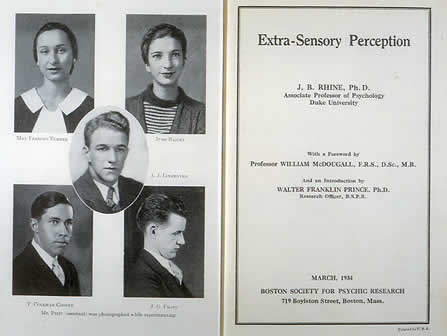
Together with his wife and colleague Louisa E. Rhine (1891-1983), and other colleagues, J. B. Rhine emphasized experimental studies. (Click here for on-line links and here for bibliography). His ESP work at Duke University with the famous ESP cards, published in the classic Extra-sensory Perception (1934), and the psychokinesis studies using dice, promoted an experimental testing paradigm based on a statistical evaluation of the results. After years of work Rhine was able to affect the field to the point that the previous emphasis on spontaneous cases and mediumship shifted to an experimental emphasis. Experimental parapsychology still dominates a good part of the field today. It is not the purpose of this discussion to provide a detailed overview, nor to explore in any detail the current parapsychological scene (the modern scene is surveyed in books such as those of Beloff, Irwin and Radin. (Click here. For additional information, click here.) Today there are many places around the world engaged in parapsychology. (Click here.) Nonetheless, the field is still very small and parapsychology has not gained acceptance among the sciences as the early pioneers had hoped for. Click here for Past Blogs |
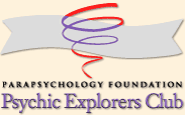 |

|
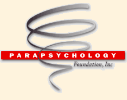 www. parapsychology. org |
||